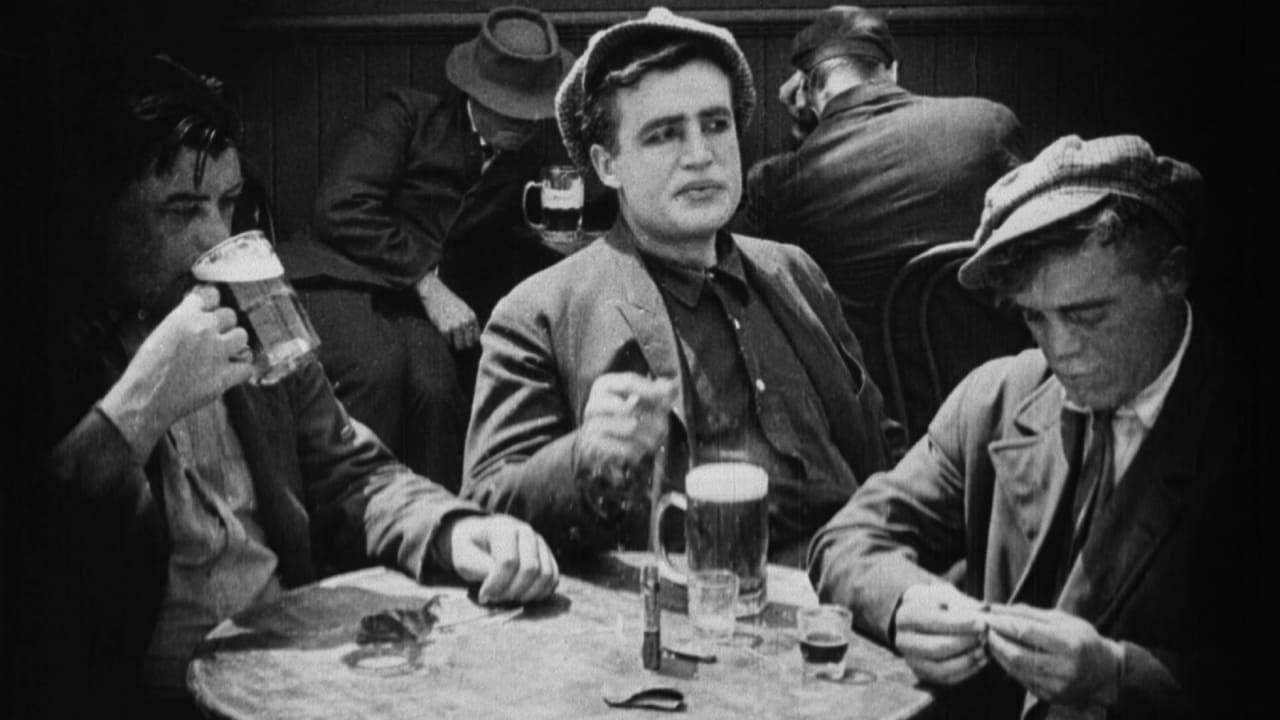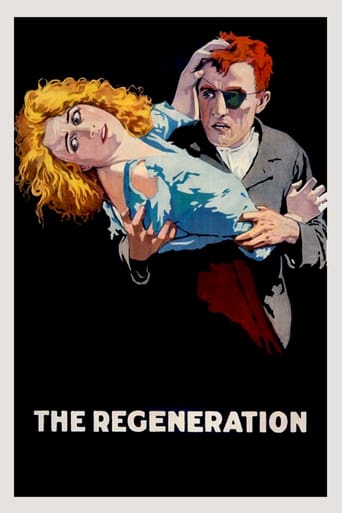

Good idea lost in the noise
... View MoreA different way of telling a story
... View MoreEntertaining from beginning to end, it maintains the spirit of the franchise while establishing it's own seal with a fun cast
... View MoreA clunky actioner with a handful of cool moments.
... View MoreIn cinema, 1915 is best known as the year of DW Griffith's epic Birth of a Nation. While I won't play down the talents and achievements of Griffith, his debut feature was merely a culmination of his prior achievements, a milestone in cinema culture but adding nothing to cinematic language. Regeneration however, a largely overlooked film (although it has its champions), was perhaps truly the most important picture of that year.Raoul Walsh, previously an assistant to Griffith, and already having a handful of short features to his name, made his full-length debut with this romantic gangster fable. The picture opens fairly conventionally for the time, Walsh displaying an incredibly firm grasp of film form for such a young director. The opening shot establishes the mood - the recently bereaved protagonist sitting alone in a bare room, a curtain billowing forlornly behind him, after which we cut away to the hearse bearing his mother in the street outside. However, we then see the lad go to the window and look down. In the very next shot, the camera is looking down at the hearse, exactly as he would see it. Bam! The point-of-view shot is born.The point-of-view shot is not merely a convenient alternative angle for storytelling. It places the audience into the position of the character. It's something unique to cinema you can't recreate that in the theatre. The only real equivalent is in novels, when the narrative is told from a character's perspective. Walsh here gives cinema that ability, and moves the audience from the position of spectator to that of participant. It's particularly apt too for Regeneration, as it was adapted from an autobiography. Walsh remains consistent to the story's roots by primarily showing the points of view of the protagonist, Owen.Another great thing about Regeneration is its use of dolly shots that is, moving the camera in or out, towards or away from the action. This wasn't an innovation as such, the dolly having been invented by Giovanni Pastrone for his 1914 epic Cabiria, but the dolly shots in that picture are largely uninspired, at best creating smooth transitions between different length shots. Walsh however really explores the possibilities of the technique. First he uses it to home in on the young Owen in the scene where his adoptive parents argue over the dinner table. Again this is a move which draws us into the character's world, as if we are being pulled forward and forced to look. Much later, in the scene where Anna Q. Nilsson bursts into the gangster's den, the camera itself rushes forward, reaching the centre of the shot at the same pace she does. In effect, the camera movement mimics hers and gives the audience a little taste of her sense of urgency.Needless to say, there is a lot more to Regeneration than these pioneering camera techniques. Walsh's handling of the dynamic moments is particularly adept, with a climactic ride-to-the-rescue worthy of Griffith, and some particularly realistic fight scenes. But he was just as capable of great tenderness as he was of great action, and the picture is shot through with the sense of melancholy romanticism that is typical of Walsh. And let's not forget the fine naturalistic acting on display, although stars Rockliffe Fellowes and Anna Q. Nilsson would soon fade into obscurity.By way of a disclaimer, I should point out that Regeneration may not literally be the first motion picture to use point-of-view shots. There was, after all, a wealth of experimentation in the early days of cinema, and many films are obscure or lost. It is shortly after this though that the technique seems to enter mainstream usage. For example, Cecil B. DeMille's The Cheat, made several months after Regeneration, features point-of-view shots, whereas DeMille's Carmen, made about the same time as Regeneration, does not. Tag Gallagher, in his superb essay on Walsh for Senses of Cinema, makes similar claims. Whatever the case, Walsh certainly excelled in a new kind of cinema, one which placed the audience inside the story, and this principle would shape much of Walsh's work throughout his fifty-year career.
... View MoreRegeneration (1915) ** (out of 4) First film directed by the legendary Raoul Walsh after working on The Birth of a Nation is probably best known for being one of the first "gangster" pictures as well as being one of the first films to actually shoot on the streets of Hell's Kitchen. Owen is orphaned at the age of ten and taken in by his abusive neighbors and by the time he's an adult (Rockliffe Fellows) he's a "gangster" living on the streets, not working and drinking too much but a social worker decides to try and changed his ways. The term gangster here isn't like the gangster films we're accustomed to but instead it means poor folks hanging out on the streets. The historical importance of this film can't be argued and it clearly influenced some of Scorsese's films as he talked about in A Personal Journey with Martin Scorsese but at the end of the day there's really very little going on in this thing. The use of real locations and real actors is a nice touch but the story drags along and the editing, which Walsh is clearly trying to copy Griffith, is a mess. The 70-minute running time feels a bit long as well. From a historic standpoint this is worth viewing once but I doubt I'd go back for a second viewing. The highlight of the film is one scene where people are partying on a boat, which catches fire and they must try to make an escape. This here is certainly one of the great scenes of the silent era.
... View MoreSpoilers herein.This film has some absolutely amazing elements, though to my mind the story, editing and all the acting could be discarded. What startled me was the realism. This was when the film industry was still based in New York, and that city becomes the star. Real street scenes are used, as well as (presumably) many of the extras. When there's a fight, it seems pretty real. When you have some toughs, they're tough and not just acting tough.There's a shot early in the story where the star as a teenager has a fight. One of the spectators has a nose tumor. Its just the sort of thing you'd see in a bad area. These details make it real.The camera is stationary except for very few moments. As I say, the editing is clumsy, but there is some terrific irising and two very effective superpositions. Those two elements, the effective use of the city and the camera, make this worth watching.The story is trite in most respects, except the ending, which is intelligent. He broke the rules of fate, and so his girl dies. Except for the theatrical moaning, the end is gritty, like the streets.Ted's Evaluation -- 3 of 3: Worth watching.
... View MorePeople who think that all silents are sticky with Victorian melodrama will be surprised by the sustained pace, the bracing realism, and the soft-pedaling of the sentimental elements of this startlingly fresh film. The 28-year old Raoul Walsh had already written and produced a dozen films when he directed this. Although the narrative rambles a bit, Walsh's dynamic use of film grammar - closeups, dollies in and out, cross-cutting between scenes, sharp editing - makes REGENERATION look more modern than many silent films made ten years later. Walsh shows his creativity when he uses the circling movements of dancers to foreshadow public panic in an impressively staged sequence of a fire [although it has little plot function]. Titles are used sparingly throughout, and even they are terse and direct. The performances are also surprisingly natural, from square-jawed Rockcliffe Fellowes [who looks something like Robert Stack] to Anna Q. Nilsson, who gives a delicate, sympathetic performance as the good girl/settlement worker. Within the outline of a traditional melodrama, Walsh forthrightly portrays the underside of contemporary society, keeps the sentiment light, and provides an ending that is not without surprises either.
... View More